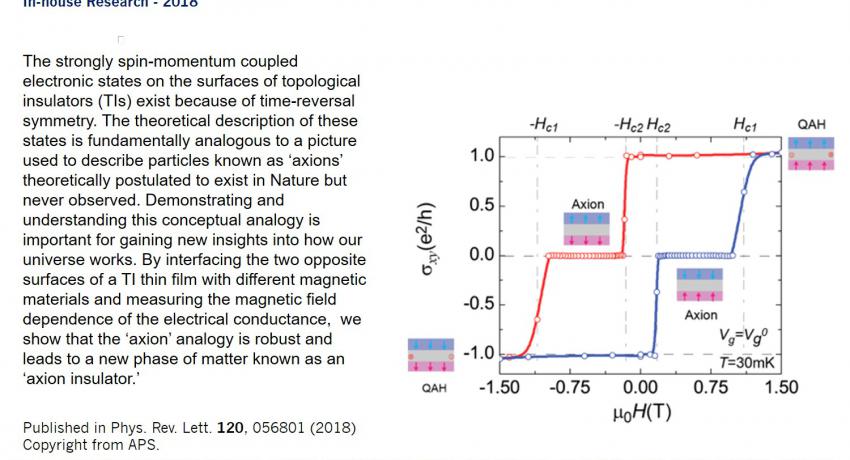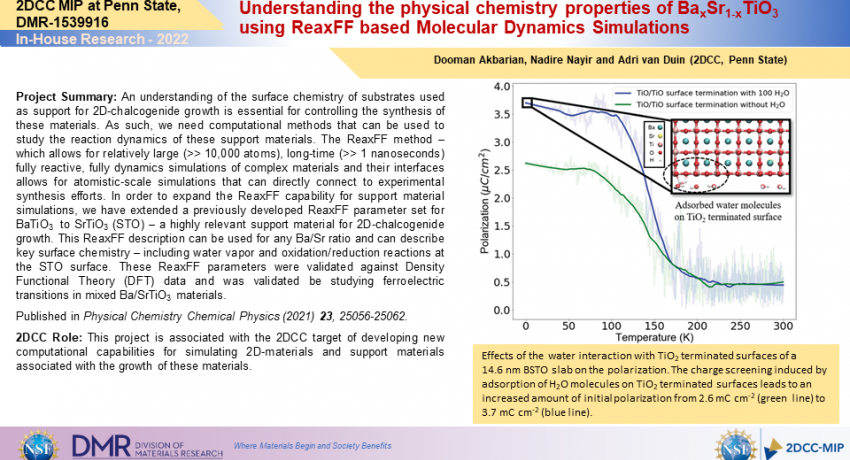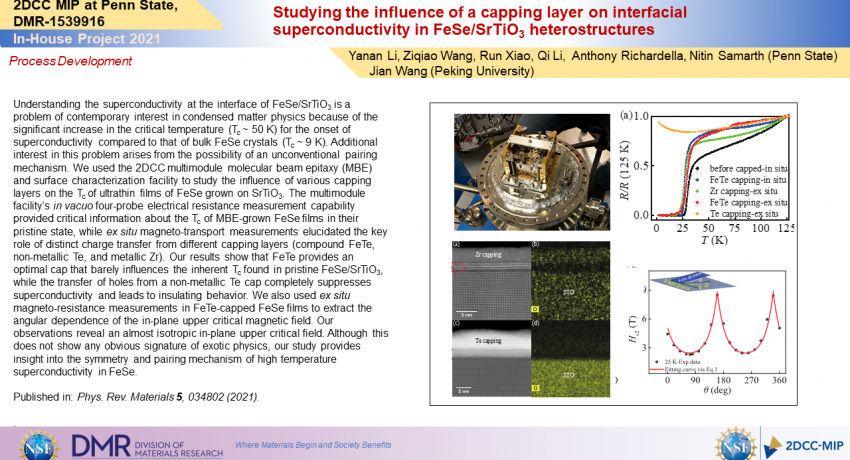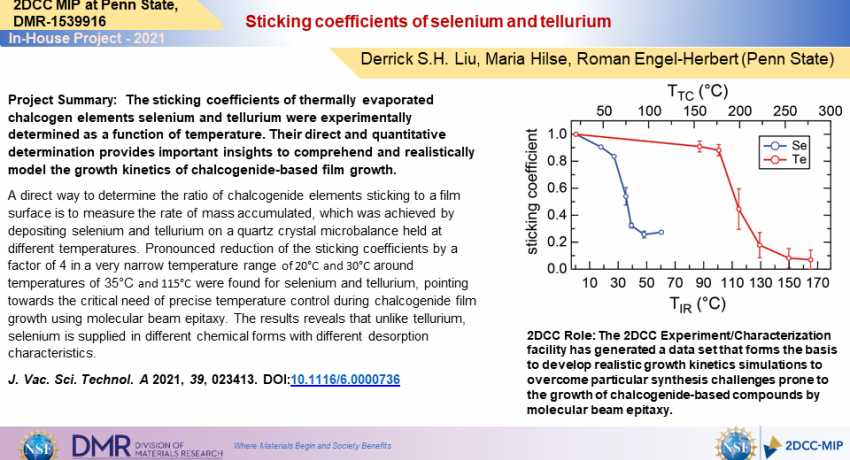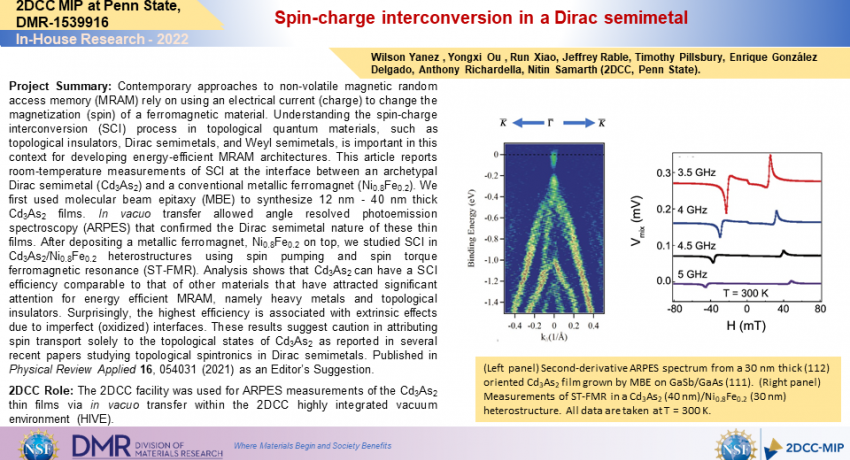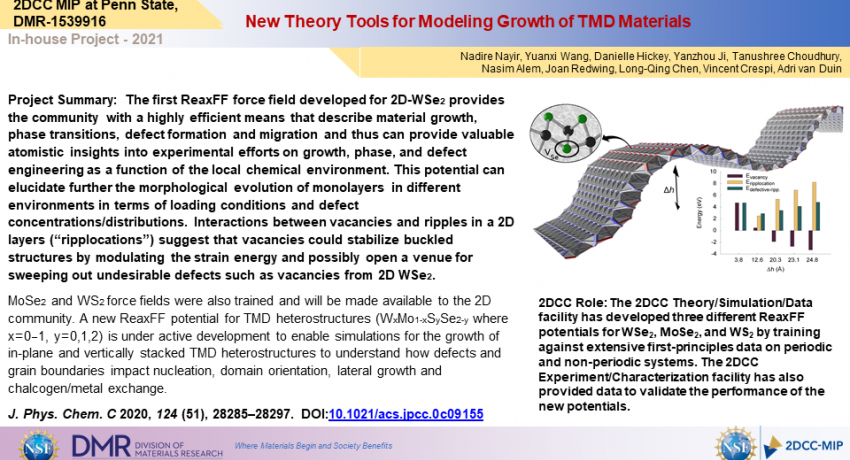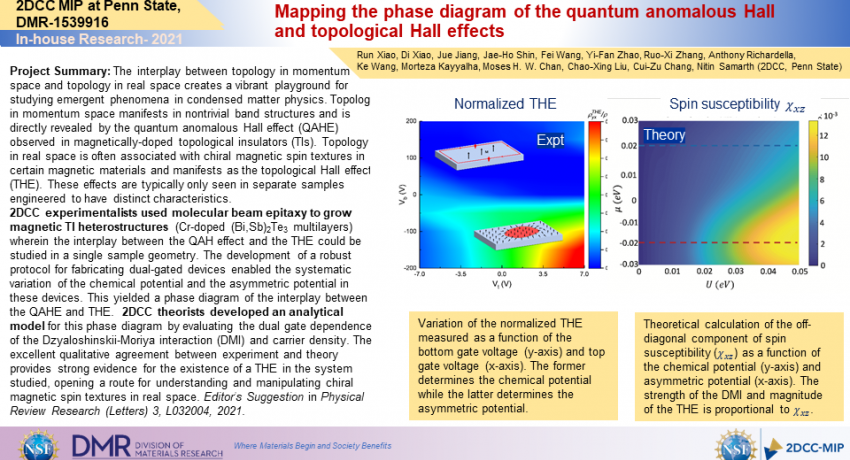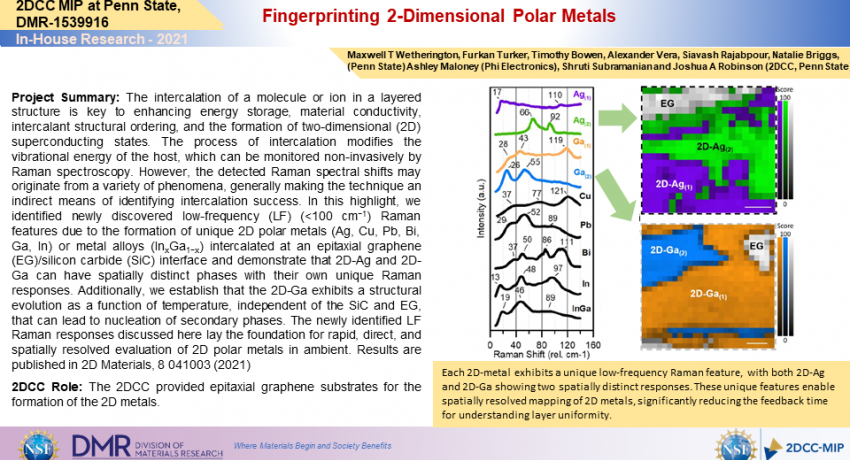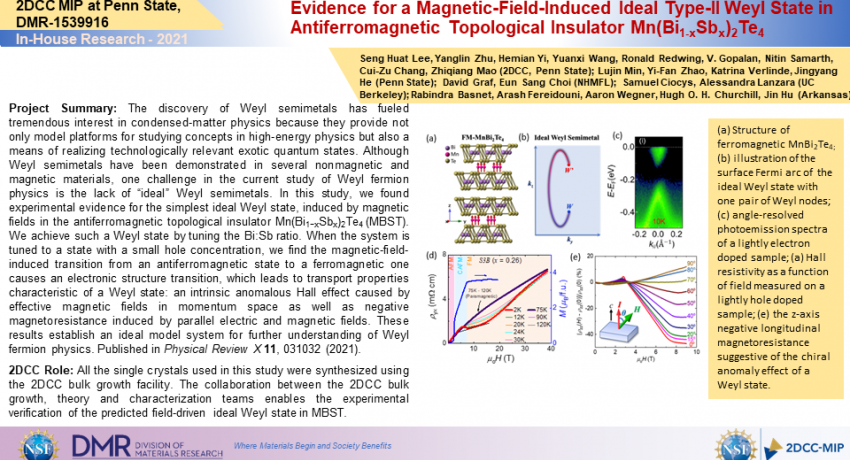This can be for any year
Understanding The Physical Chemistry Properties Of BaxSr1-XTiO3 Using ReaxFF Based Molecular Dynamics Simulations
What Has Been Achieved:
We developed and validated a ReaxFF description for Ba/SrTiO3 perovskites.
Importance of the Achievement:
These ReaxFF parameters can be straightforwardly combined with existing ReaxFF descriptions for Mo/W/Se/S/C/O/H, enabling simulations of MoWSeS-material growth on STO support.
Unique Feature(s) of the MIP that Enabled this Achievement:
This work responds to a continuing external user interest in ReaxFF parameters for 2D materials and their growth substrates
Studying The Influence Of A Capping Layer On Interfacial Superconductivity In FeSe/SrTiO3 Heterostructures
What Has Been Achieved:
We carried out a careful study of the effect of 3 different capping layers on interfacial superconductivity in FeSe/SrTiO3 heterostructures.
Importance of the Achievement:
Sticking Coefficients Of Selenium And Tellurium
What Has Been Achieved:
A new ReaxFF potential for large-scale simulations of structural engineering and synthesis of Two-dimensional WSe2 has been made available to the 2D community
Importance of the Achievement:
Spin-Charge Interconversion In A Dirac Semimetal
What Has Been Achieved:
We used MBE to Dirac semimetal/ferromagnet metal (Cd3As2/Ni0.8Fe0.2) heterostructures and measured spin-charge interconversion using spin pumping and spin torque ferromagnetic resonance. Importance of the Achievement: This work showed efficient spin-charge interconversion in a Dirac semimetal and revealed a surprising enhancement in the interconversion efficiency with an oxidized interface.
Unique Feature(s) of the MIP that Enabled this Achievement:
New Theory Tools For Modeling Growth Of TMD Materials
What Has Been Achieved:
A new ReaxFF potential for large-scale simulations of structural engineering and synthesis of Two-dimensional WSe2 has been made available to the 2D community
Importance of the Achievement:
Mapping The Phase Diagram Of The Quantum Anomalous Hall And Topological Hall Effects
What Has Been Achieved:
Developed dual-gated magnetic topological heterostructures that manifest both the quantum anomalous and topological Hall effects as a function of the dual-gate voltages.
Importance of the Achievement:
This work provides a robust pathway for producing samples that enable the fundamental study of the interplay between Berry curvature in momentum space and real space. These unique samples and patterned devices are available for users as sample requests.
Fingerprinting 2-Dimensional Polar Metals
What Has Been Achieved:
A facile route for characterizing 2D metals.
Importance of the Achievement:
This work provides the first reported ability to rapidly identify the presence of 2D metals.
Unique Feature(s) of the MIP that Enabled this Achievement:
Large area epitaxial graphene
Publication:
Maxwell T Wetherington et al 2021 2D Mater. 8 041003
Acknowledgements:
Evidence Of 2D Room-Temperature Magnetic Semiconductors
What Has Been Achieved:
Evidence in both experiment and theory for magnetism in 2D doped semiconductors. Intrinsic magnetism in such a system would yield fascinating electro-magneto-optical effects such as effective local fields of ~100 Tesla that split the K and K’ bandstructures, i.e. valleytronics.
Importance of the Achievement:
Evidence For A Magnetic-Field-Induced Ideal Type-II Weyl State In Antiferromagnetic Topological Insulator Mn(Bi1-XSbx)2Te4
What Has Been Achieved:
The simplest ideal Weyl State in ferromagnetic (FM) phase of Sb-doped MnBi2Te4 has been demonstrated via transport measurements. This state is found to be sensitive to carrier density and can be accessible via tuning the Bi:Sb ratio.
Importance of the Achievement:
This work establishes an ideal model system for further understanding of Weyl fermion physics .
Unique Feature(s) of the MIP that Enabled this Achievement:

